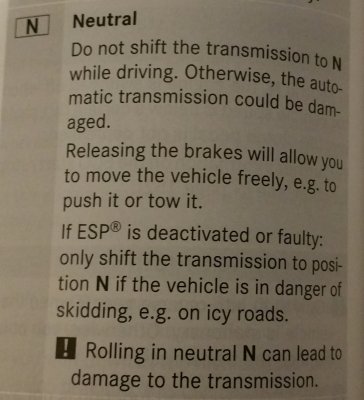A couple of questions about auto trans boxes as used.
First question, I watched EE's video >> re Five things not do and on the subject of coasting in neutral it says you shouldn't - but doesn't at any point say it is damaging to the transmission. Can you go further and stop the engine and coast (to a halt if desired) without damaging the transmission? (Not something I intend making a habit of, but there are reasons I might occasionally want/need to).
Second question, revving in neutral. ZF's HP4 could suffer severe damage from this - other boxes also? Again, not something I'll be making a habit of but I probably have the need for holding rpm higher than idle (circa 3000rpm) with no load (hence neutral) for the purpose of LPG calibration. Can this cause harm? By what I've heard of the ZF HP4 box, it would be inadvisable but is the HP4 uniquely sensitive to this and others not at all, or is it a sliding scale with all auto boxes affected to some degree? My box (not ZF) is also a 4 speed (with TC lock up).
TIA.
First question, I watched EE's video >> re Five things not do and on the subject of coasting in neutral it says you shouldn't - but doesn't at any point say it is damaging to the transmission. Can you go further and stop the engine and coast (to a halt if desired) without damaging the transmission? (Not something I intend making a habit of, but there are reasons I might occasionally want/need to).
Second question, revving in neutral. ZF's HP4 could suffer severe damage from this - other boxes also? Again, not something I'll be making a habit of but I probably have the need for holding rpm higher than idle (circa 3000rpm) with no load (hence neutral) for the purpose of LPG calibration. Can this cause harm? By what I've heard of the ZF HP4 box, it would be inadvisable but is the HP4 uniquely sensitive to this and others not at all, or is it a sliding scale with all auto boxes affected to some degree? My box (not ZF) is also a 4 speed (with TC lock up).
TIA.
Last edited:

